Sean Smith Designs presents 1,180 hp 1969 Chevrolet Camaro
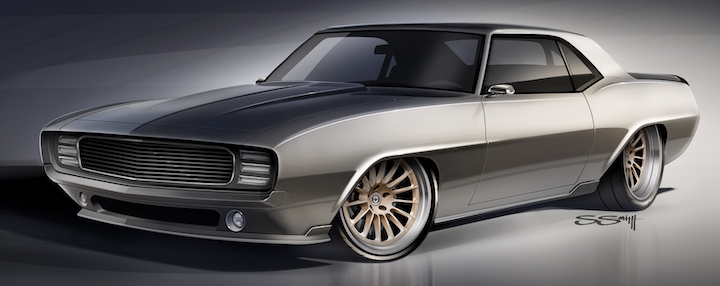
(February 8, 2023) Visitors to the 2023 Grand National Roadster Show which took place in Pomona, Calif., Feb. 3-5 witnessed the unveiling of the latest work by vehicle designer Sean Smith and a build team led by Driven Speed Shop. Based on a 1969 Chevrolet Camaro owned by Michael Shields, the result is a remarkable vehicle that combines luxury and elegance with the astonishing performance of an 1,180hp supercharged Chevrolet 427 LS7 V8 engine.
As one of the country’s premier automotive designers with more than 20 years of experience, Smith began his career at American Honda after graduating from Artcenter College of Design in Pasadena, CA where he majored in Automotive Design. Smith would later work with Saleen Automotive and Rockstar Games, as well as leading muscle car luminaries such as Ringbrothers, SpeedKore and, more recently, Salvaggio Design.
With Smith’s work starring in the Fast and Furious franchise as well as grabbing headlines at events such as SEMA, Goodguys, Grand National Roadster Show and more, his time is divided between commissions from builders around the country as well as his own customers.
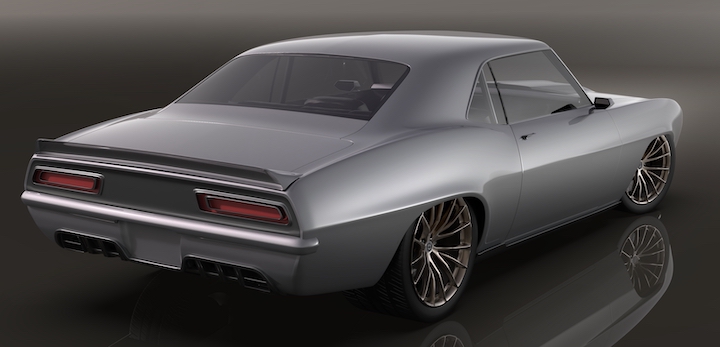
In the case of the Fenix Camaro, Smith was approached directly by Shields who was motivated by another Smith-penned Camaro that debuted at the 2019 SEMA Show. Hoping to have his car built to a similar caliber, the pair discussed themes and design direction before Smith developed the mutually agreed sports GT concept. Inspired by vehicles from Bentley, Aston Martin and Porsche, the ’69 Camaro would perfectly blend luxury with performance by combining the highest quality materials with spine-tingling power.
The task of transforming Smith’s pen strokes into metal was assigned to Mikey Dascoli at Driven Speed Shop. The team would meet virtually on a weekly basis to discuss progress and design execution. The goal was to create an understated machine that leaned towards subtly rather than chest thumping, yet wouldn’t be overshadowed by the inevitable wave of ’69 Camaros at most events.
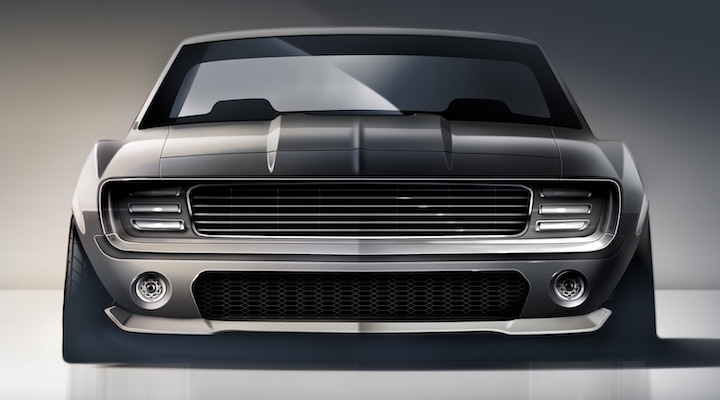
The owner agreed to a stunning silver paint for the body, with Smith creating contrast using both Liquid Champagne and satin Charcoal Grey finishes to highlight some of the car’s details and wheels. The result is an elegant, timeless combination that turns heads and won’t look out of place at any destination.
In pursuit of subtle transformations, Driven Speed Shop refined the Camaro’s lines, reproducing Smith’s reimagined front-end by fabricating a front valance with its driving lights, wide intake and aerodynamic splitter. New bumpers were also created for both ends of the car and smoothly integrated into the bodywork. The front grille was machined from billet aluminum based on Smith’s renderings thanks to a collaboration between Dascoli and Patrick Sukraw, who modeled a number of details in CAD, including new headlight units.
The front splitter is part of the car’s aero system, which was inspired by the winglets on the end of passenger jet wings. The Camaro’s winglets can be found on the front splitter and rocker panels, while the rear-end features a 3D-printed trunk spoiler and diffuser-style rear valance.
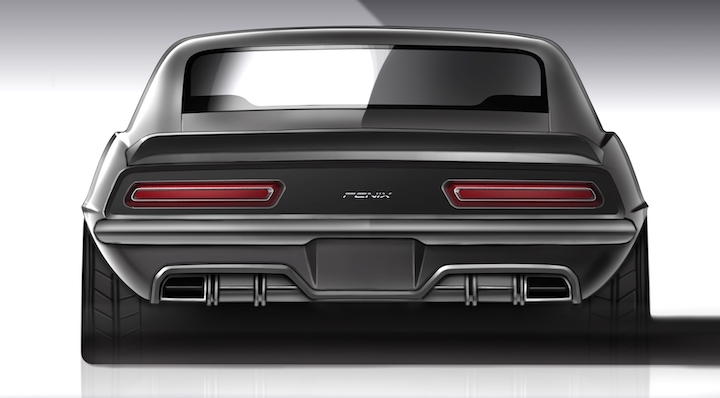
Echoing the front, the rear features a new light panel that houses custom tail lights designed by Smith and 3D machined with custom lenses. The aim was to keep the rear-end simple but appear wider. To achieve this, Smith ensured everything ran horizontally with very few vertical elements to accomplish the effect.
Dascoli and his Driven team reworked the body extensively to ensure crisp fit lines and tight door gaps. They removed the original vents from behind the Camaro’s doors and added billet door handles. Once the body was fitted to the Roadster Shop Fast Track chassis, Driven Speed Shop also fabricated the Camaro’s floors, wheel tubs and trunk.
Made from 10-gauge boxed steel, the Roadster Shop frame included RS Fast Track front suspension with C7 Corvette spindle and hub assemblies. It utilized a 1/25” splined front sway bar with C7 end-links and six-piston Baer brake calipers with 14” rotors fitted at each corner. A set of 18x9” front and 19x12” HRE RS103 wheels were then added, equipped with 255/35 and 325/30 Michelin Pilot Sport 4 tires, respectively, in an attempt to harness the power that was to come.
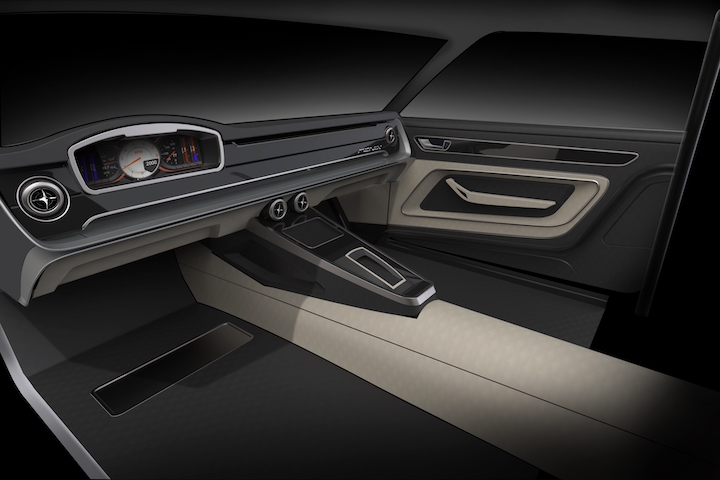
As mentioned, Fenix is powered by a supercharged 427 LS7 V8 built by Wegner Motorsports to develop a dyno-proven 1,180hp. It’s mated to a Tremec T56 six-speed from RPM Transmissions and framed within an engine bay fabricated by Driven Speed Shop.
The paint was handled by Kandy Shop Creations in Mesa, Ariz., using a custom-mixed PPG silver. They also provided the Liquid Champagne and satin Charcoal accents to the exterior and engine bay.
The interior was inspired by some of the owner’s favorite European sports cars, creating a significant departure from the 1969 layout. Smith designed the dashboard with upper and lower wing sections. And after 3D scanning the cabin, Smith’s sketches were transferred into 3D CAD files by Jeff Gardner at JG3D. This allowed the dash, door panels and center console to be precisely machined from modeling foam board. The parts were then supplied to Marco and Mando Flores at Sew Cal Rods in Ontario, CA for trimming and installation.

The interior was upholstered in a combination of Charcoal Grey and Creme leather, with Smith introducing a matte Liquid Mercury paint to the bottom of the dashboard and to accent a number of details throughout the cabin.
With Creme leather destined for the door panels and seats, Sew Cal formed the seats by hand before adding a unique diamond-stitch pattern reminiscent of modern Bentley interiors. Once the team was finished, only the seatbelts remained of the original Camaro interior, and even they were replaced to ensure a perfect finish.
